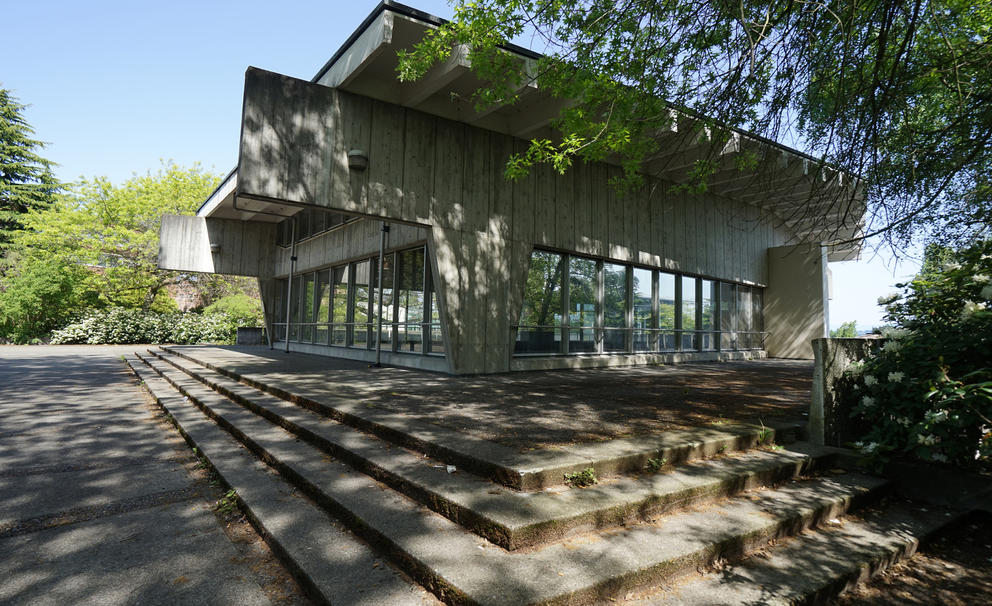A King County judge has found that the city of Seattle’s landmarks ordinance does not apply to the University of Washington’s main campus.
The decision is a boost for the UW’s plan to build a new $106 million Computer Science & Engineering complex on the site of More Hall Annex, a 1960s nuclear reactor building that is on the national and state registers of historic places. Preservationists have sought to protect the structure from demolition; the UW says their new facility, called the CSEII building, must be erected at that site and the annex brought down.
Both sides had argued that the decision by the court could have large consequences for the city’s power to regulate development or for the UW’s independence to pursue its educational mission unhindered. The U Dub argued that state law and the state constitution free its Board of Regents to make decisions, including which buildings to build, leave standing or demolish. The city argued the university had to adhere to local laws like other state agencies.
Superior Court Judge Suzanne Parisien’s ruling stayed away from making a sweeping decision in the case, but focused specifically on the language of the city’s Landmarks Preservation Ordinance itself. “The LPO,” she concluded, “has no application to the University of Washington because the University is not a 'person' or 'owner' as defined in the LPO.”
She went on to say that it is widely recognized that institutions of higher education are also special cases, “encumbered with a public purpose that is essential to the future of the state, and this public purpose requires that the campus continue to be developed to meet the growing and changing educational needs of the people of this state.”
Sally Clark, director of regional and community relations for the university, said in an email, “We are obviously pleased with this outcome. The UW has demonstrated its commitment over time to historic preservation, and we will continue to do so. The UW remains committed to being great stewards of our beautiful campus, while at the same time ensuring excellent spaces for learning.”
A group of preservationists, Save the Reactor, said in a statement that they were “obviously disappointed in the judge's decision which did not rule on all the substantive issues of the case. Instead, the opinion states that the University is not an ‘owner’ as defined in the Landmarks Preservation Ordinance."
"This ‘technicality’ is somewhat farfetched," the preservationists said, "because in what other scenario would the UW say it's not an ‘owner?’ The University clearly owns the Seattle campus. It voluntarily submitted a landmark nomination for Husky Stadium (which was not nominated by the Landmarks Preservation Board). The UW complies with the Landmarks Preservation Ordinance when it seeks Landmarks Preservation Board approval for work on its buildings at Sand Point Naval Air Station Historic District. And UW Tacoma is located in a designated local historic district. Is the UW not an owner in those cases?”
At a hearing on April 1, Foster Pepper attorney Patrick Schneider, arguing for the university on behalf of the attorney general, had made the case the UW is charged with growing and expanding and that some funding for their new CSEII building, over $17 million, had already been obtained from the state Legislature. Interference would be untenable. A map with red dots was shown to the judge indicating which buildings on the main campus might be eligible for city landmark status. There were so many red circles, it looked like the U Dub had smallpox.
The university's Regents, Schneider argued, have the right to develop the campus as they see fit in the name of academic freedom and their higher-ed mandate. At the same time, the UW argued that it is a strong steward of its historic architecture.
The city argued that the University was claiming a degree of autonomy that is at odds with the Growth Management Act and warned — in what the UW termed was a “parade of horribles” — that if the court bought the university’s sweeping arguments for autonomy, state universities and colleges could expect to exempt any of their properties from local land use laws. Assistant City Attorney Roger Wynne argued that the UW must comply with such local laws.
Judge Parisien did not weigh in on whether other development regulations — environmental or otherwise — apply to the campuses here or elsewhere but narrowly ruled on the specific language of the city’s landmarks law. Her interpretation leaves the question as to whether other public entities — state agencies, the school district or other publicly owned structures — could now argue that they, too, are not covered by the landmarks ordinance.
Another defendant in the UW’s suit was DocomomoWeWA, the chapter of the national preservation group that has been a major advocate of the Nuclear Reactor Building and which had submitted the landmarks nomination last December that sparked the UW’s lawsuit. Preservationists have been concerned about the UW’s determination to destroy a historic structure that was designed by a brilliant consortium of the university’s own architects and creative talents. The Nuclear Reactor Building, built in the early 1960s as part of America’s post-Sputnik emphasis on science education, is seen by some as unique in the way it housed a “teaching reactor” for future nuclear engineers, but allowed outsiders to look in through windows to view a previously secret process. Docomomo, the Washington Trust for Historic Preservation and Historic Seattle are considering their legal options.
The city and the UW have previously disagreed about the applicability of the landmarks ordinance and have carefully negotiated workarounds over time. The suit is seen as a strong move by the UW to clear the way for future development by getting a legal decision on the issue. The current decisions appears to open up the university's options to make its own choices.
Wynne says the city attorney’s office “is analyzing the decision and will consult with our clients on how best to move forward.”


